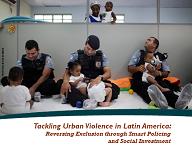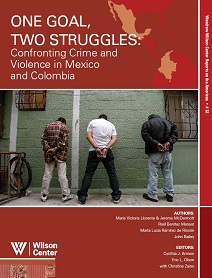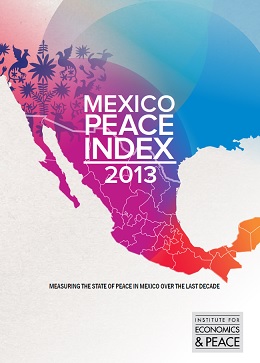Violencia organizada en México: Un estudio de los factores del incremento de la violencia organizada
Autor: Małgorzata Polańska
Análisis comparativo de las tendencias de crecimiento de la violencia organizada en México y sus consecuencias para el combate del crimen organizado en México.
Reversing Exclusion through Smart Policing and Social Investment, WOLA.
The cities featured in this report have had different experiences. All, however, have pursued similar—if sometimes still nascent—crime and violence reduction strategies that give central importance to reincorporating and providing social services to marginalized communities. All are attempts to “reverse exclusion. In Rio, the state government targeted selected favelas for “pacification.” In Medellín, a mayor implemented an anti-violence strategy that brought social services to poor communities dominated by drug-funded criminal gangs. In Ciudad Juárez, a counter-drug campaign, with the Mexican military as the dominant actor, appears to have intensified infighting between drug trafficking organizations, and violence has skyrocketed. Finally, in Santa Tecla the municipal government brought together the local government, citizen organizations, the police, and state agencies to coordinate anti-violence efforts, including prevention programs.
What aspects of Colombia’s strategy and tactics for fighting organized crime in its own territory offer useful lessons for Mexico? What might Colombia’s steps and missteps offer by way of example or counterexample? What is unique about each case such that comparisons are misleading? What do current security challenges in Colombia suggest about the threat posed by organized crime more generally? To reflect on these questions, the Latin American Program commissioned a series of papers from international experts with a wealth of experience on issues of security, violence, and transnational criminal organizations.
Título completo: Construyendo Inseguridades. Aproximaciones a la violencia en Centroamérica desde el análisis del discurso.
Autores: Sebastian Huhn, Anika Oettler y Peter Peetz.
Fecha: Noviembre, 2006.
Resumen original: En todos los países de Centroamérica se está llevando a cabo una lucha de definición, interpretación y clasificación entorno al campo temático de la violencia, la delincuencia y la (in)seguridad. Y aunque esta lucha tenga consecuencias políticas y sociales sumamente relevantes, no ha sido objeto de un análisis sistemático. Este artículo evalúa el estado del arte y, basándose en reflexiones metodológicas, resalta el aporte de investigaciones cualitativas a nivel de barrio viceversa estudios cuantitativos a nivel nacional o regional. En un segundo paso, tomando el discurso sobre las pandillas juveniles centroamericanas como ejemplo, se muestra que no son los fenómenos de violencia en sí que desatan histerias de inseguridad o que provocan la implementación de políticas criminales represivas. Más bien, la percepción de y las reacciones a la inseguridad y la violencia se basan en discursos sociales acerca de estos fenómenos.
Para leer el documento completo presione aquí
The Mexico Peace Index (MPI), produced by the Institute for Economics and Peace (IEP), provides a comprehensive measure of the levels of peacefulness within Mexico from 2003 to 2012. It includes an analysis of the measures that make up the Index, as well as other socio-economic factors that are normally associated with peaceful societies. It also estimates the economic impact of violence and the economic benefits that would flow from increases in peace. The report does not make policy recommendations nor moral judgments on the appropriateness of government responses, rather it gathers and analyses data relevant to peace and violence in Mexico to better understand the drivers and economic value of peace.




